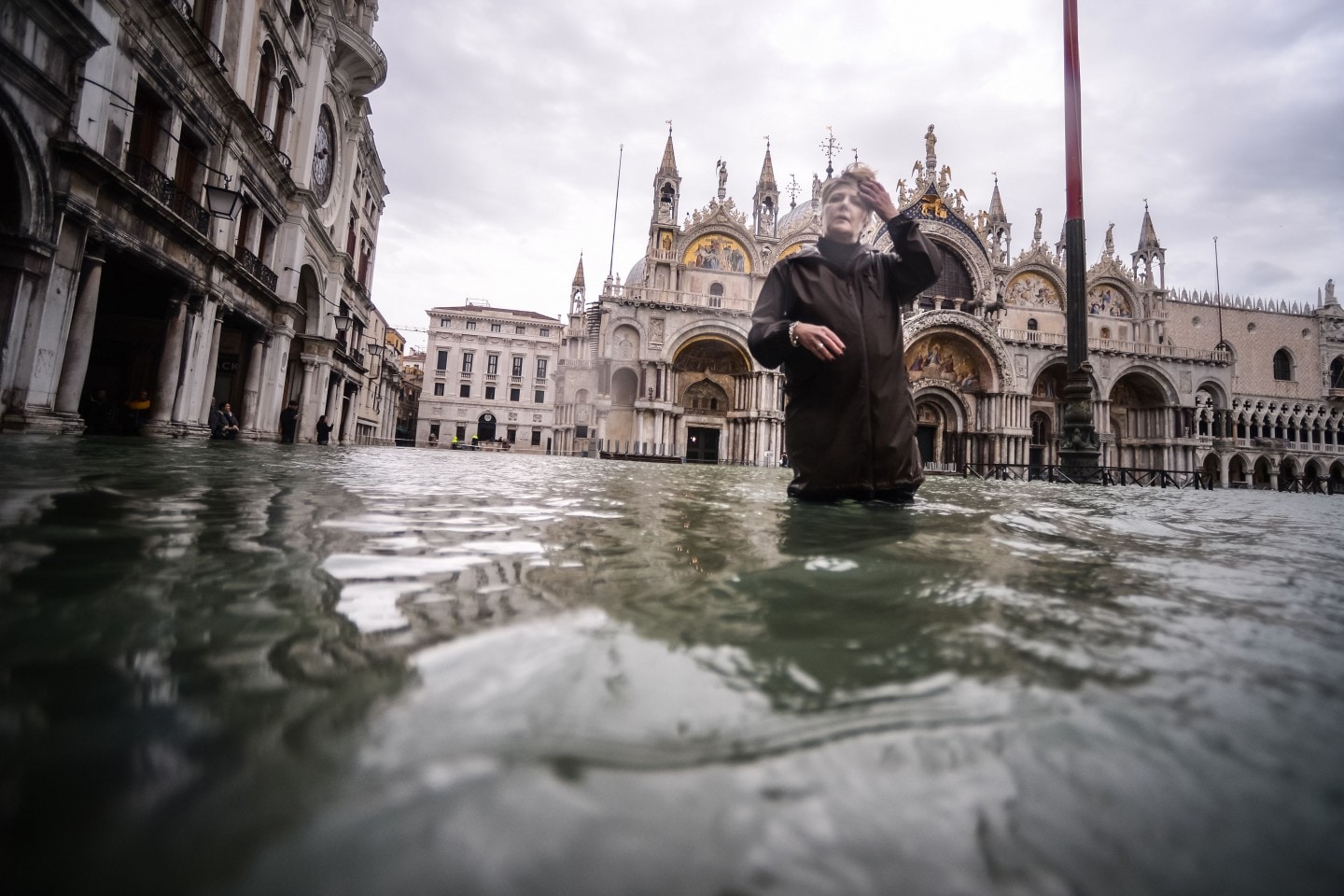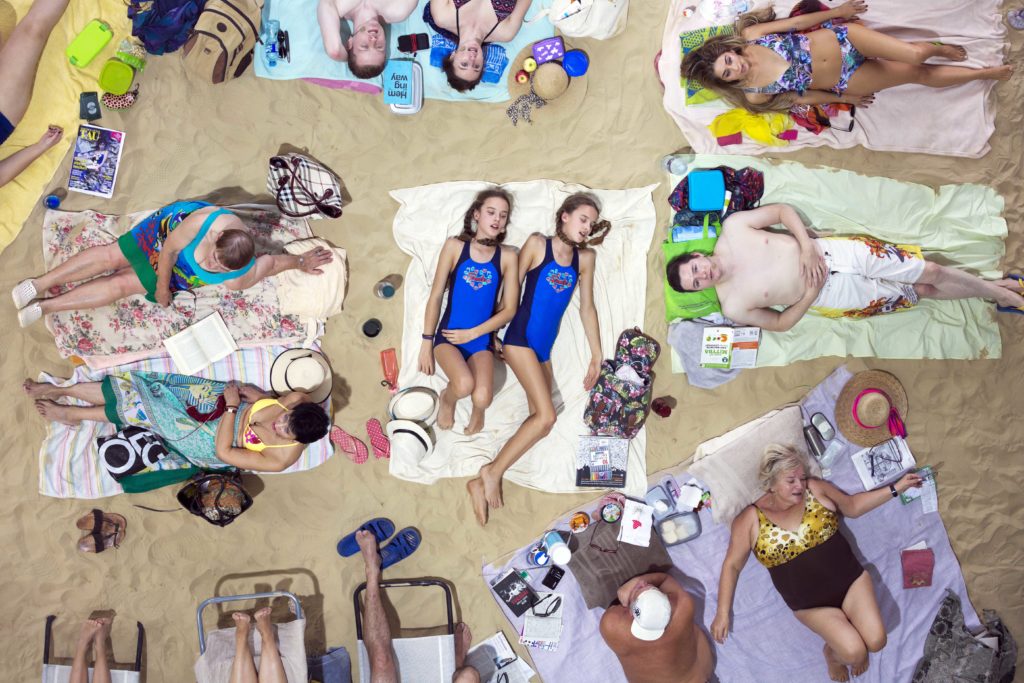Culture
Priceless art and the flooding in Venice

A woman walking through a flooded St. Mark’s Square in November, 2019.
Image courtesy of: The Washington Post, photograph courtesy of: Filippo Monteforte
Last November, Venice, one of the world’s most iconic and unique cities suffered the worst flood to befall the city in more than fifty years. Local authorities called upon the Italian government to issue a State of Emergency as flood levels reached record-high measurements of 74 inches.
More than 85% of the city was flooded, including the historic St. Mark’s Basilica and the adjacent square. The Patriarch of St. Mark’s Basilica, Francesco Moraglia said that the basilica suffered “structural damage because the water has risen. This is causing irreparable harm, especially- when it dries out- in the lower section of the mosaics and tiling.” Alluding to the previous three floods which occurred over the past twenty years, Moraglia said, I have never seen something like what I saw yesterday afternoon at St. Mark’s square. There were waves as if we were at the beach.”

Workers attempting to “clean up” after the November 2019 flood.
Image courtesy of: The Washington Post, photograph courtesy of: Luca Bruno
The salty floodwater is considered extremely damaging to the ancient marble floors of St. Mark’s Basilica. Following the flood, chipped and missing marble pieces were found as workers diligently assessed the damage. Further concerning is that there is vast concern about the long-term damage to the pillars which support the structure.
The church is beautifully covered with a gold and marble mosaic from floor to ceiling, much of the flooring dates back to 1094. Mario Piana who heads the restoration said, “I’m worried for the basilica. The acqua alta does not create immediate, obvious damage. On the outside, you do not immediately see anything. But it is comparable to radiation exposure. In a week, you lose your hair. In a year, you might be dead.”
Venice’s eleven city-run institutions closed in November while cleaning and restoration work ensued. The Fondazione Musei Civici, the institution that manages and develops the cultural and artistic heritage of Venice and the surrounding islands, said that the most affected museum is the Ca’Pesaro which hosts the International Gallery of Modern Art. Not only was the flood damaging enough, a short circuit caused a fire that damaged the landing connecting the ground floor to the first floor.
Toto Bergamo Rossi, director of Venetian Heritage, explained that the main issue is saltwater. He said, “When salt permeates the materials of these buildings – be they marble, tiling, plaster or wood – it crystallizes and ascends vertically once the weather gets drier, from the ground to the first floor and so on. It’s almost like a cancer for these structures, all the more so when they are so old. The entire wall system can be affected.”

Tomas Saraceno’s installation at the Venice Biennale.
Image courtesy of: ArtNet News, photograph courtesy of: Julia Halperin
The Venice Biennale was temporarily closed following the flooding. The more than 600,000 tourists that arrived in the city for the event were forced to find alternate entertainment. In a city that draws roughly 25 million tourists each year, the number of people that the Biennale brings is not a particularly huge percentage. However, in a city as fragile as Venice, perhaps it does not make sense to add to the already very delicate situation.
Nevertheless, there is a school of thought that stresses that an organization as powerful as the Biennale has the capacity to bring awareness to Venice’s plight… and to the dangers of global warming. For example, the installation from Berlin-based artist Tomas Saraceno was monumentally relevant, “Aero(s)cene: when breath becomes air, when atmospheres become the movement for a post fossil fuel era against carbon-capitalist clouds.” This 2019 piece created a soundscape that related to the changing tide and rising sea levels. Pieces like this are important because they keep global issues in the forefront.

“Sun & Sea”.
Work of theater director Rugilė Barzdžiukaitė, playwright Vaiva Grainytė, and composer Lina Lapelytė.
Image courtesy of: ArtNet News
“Sun & Sea” is one exhibition about climate change which proved to be especially relevant. Set in an indoor beach, this work of art, Lithuania’s contribution, speaks to climate change and destruction. Lucia Pietroiusti, the Pavilion’s curator said, “We see the effects of climate change far away from where we are, and we turn away. The same effects get closer, and we call them ‘events’, expecting everything to return to normal some time soon. This is just another way of turning away: away from the unfathomable at our doorstep.”
Gazing down from a second-floor balcony, viewers watch the performers scrolling through their iPhones and tablets as the sounds of seagulls and ice cream trucks echo in the distance. This piece wants you to focus on the vast implications of global warning. Though the performers focus on the mundane, the utter nothingness; the problem of an “inside” beach that may or may not be due to global warming is the real problem emphasized!

